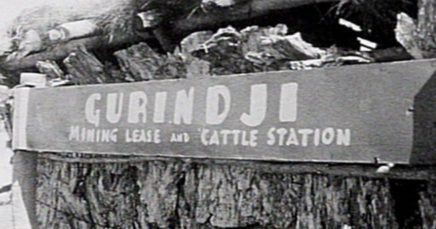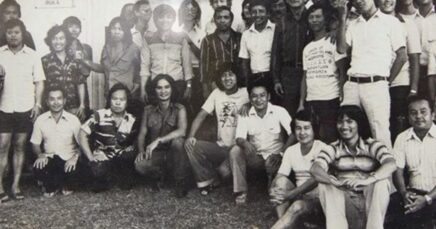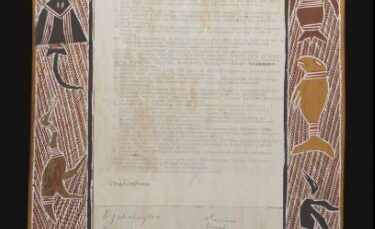Introduction
I first came across Laurie Carmichael in November 2020. Desperate to meet the looming deadline to submit a thesis proposal, I had spent days frantically leaping down academic rabbit holes in search of a suitable Honours topic. But after stumbling across Carmichael and the Prices and Incomes Accord, I knew I had found someone (and something) worth writing about.
Carmichael’s career was an exemplar of a lifelong dedication to solidarity and the working class. His innovative approach to trade union politics during the Accord years (1983-1996) has enduring significance for the Australian left – as it was Carmichael’s political and industrial strategies that helped guide the labour movement through this extremely difficult restructuring period.
Background

Carmichael was the archetype of a battle-hardened 20th century unionist. Born in the working-class Melbourne suburb of Coburg in 1925, Carmichael – like so many members of his generation – was profoundly affected by the scarcity and harshness of the Great Depression. Deeply impacted by his family and friends struggle with unemployment during these years, Carmichael left school at age 14 in pursuit of a vocational career and the stable income it could provide.
After his departure from school, Carmichael progressed steadily along the radical pathway. From age 15, he was involved in the Eureka Youth League – the official youth wing of the Communist Party of Australia (CPA). By 18, he was an official CPA member. In 1943, Carmichael also enlisted in the RAAF to fight fascism overseas. And, had Laurie not contracted rheumatic fever while completing air force training at the MCG, he may very well have done so. Following his days of service, Carmichael completed his fitter’s apprenticeship and found work at the Williamstown dockyards in Melbourne.
At the dockyards, Laurie escalated his involvement with the CPA and the Amalgamated Engineering Union (AEU) – the CPA-affiliated union to which he belonged. Gifted with an impressive public speaking capacity and a ravenous appetite for socialist literature, Laurie’s potential for radical leadership was quickly recognised at the AEU. Twelve months after arriving at the dockyards, Laurie was elected shop steward, and within a decade he was appointed district committee secretary (the highest AEU position in Victoria). `
With the AEU securely under his progressive leadership thereafter, Carmichael went on to lead his union through the major political upheavals of the 1960s and 1970s. Indeed, Laurie was seemingly at the forefront of every progressive campaign in Australia from the 1960s onwards. For example, Carmichael was an outspoken opponent of the Vietnam War. Many alive at the time still remember the frantic scenes at the Williamstown Court House in 1969, where Laurie, appalled by the conflict as both a father and a communist, was arrested alongside his wife Val for protesting their son Laurie Jnr’s conscription.
Equally as remarkable was Carmichael’s role in the general strike of 1969. As one of the first leaders of a major union to publicly call for a general strike against the federal government’s penal powers, Laurie was instrumental in delivering what is widely considered to be one of the greatest trade union victories in Australian history.
A Controversial Figure of the Australian Labour Movement
The Laurie Carmichael that my thesis considers, however, is a far more contentious historical figure. With the exception of Bill Kelty, Carmichael is the unionist most closely associated with the controversial Prices and Incomes Accords. Accordingly (no pun intended), Laurie’s central role in the drafting and implementation of the Accord has seen his legacy challenged by a minority within the academic community.
This critical perspective, advanced most notably by Liz Ross and Elizabeth Humphrys, views the latter decades of Carmichael’s career with contempt.[i] In the work of these scholars, Carmichael is depicted as the communist leader who sold out to capitalism (Ross), or as one who was unwittingly duped by the ALP’s clandestine neoliberal agenda (Humphrys).
To qualify, I am not a blind Accord apologist. The Accord, without doubt, fell short of its more progressive ambitions. Under the Accord, workers suffered from a reduction in real wages, the removal of free tertiary education, and it contributed to the decline of Keynesian economics. Yet, the Accord also delivered several notable victories for workers, such as compulsory superannuation, Medicare, and (some) progressive tax reform. So, regardless of whether this is considered a fair trade for workers, it should first be acknowledged that both capital and labour did record some gains under the Accord.
Beyond simply recalling the various successes and failures attached to the Accord, my thesis strove to contextualise the actions of Carmichael. What I felt was missing from the existing literature was a sense of why he did what he did. In the dominant critiques of the Accord, Carmichael’s actions are not explained in a satisfactory level of detail. He is merely represented as a unionist who failed to fight against the Labor Party’s deregulatory agenda.
As I demonstrate in my thesis, however, ideological purity was not Carmichael’s primary concern in the early 1980s. In the decade before the implementation of the Accord, Laurie was confronted by several political obstacles that threatened his membership and the broader labour movement.
The first of these was the sharp decline in Australian manufacturing. Reeling from the series of tariff cuts first introduced by Whitlam’s administration in 1973, Carmichael’s members – all of whom worked in domestic manufacturing – were at a crossroads. With 200,000 jobs lost in manufacturing from 1974-1984 and more cuts on the horizon,[ii] Carmichael and the AMWU (Amalgamated Metal Workers Union, successor to the AEU) were acutely aware that manufacturing could only be salvaged if the government were to directly intervene.
Another pressing issue was the incumbent Liberal government. Having infamously seized power in 1975 via the constitutional coup d’état now known as the Dismissal, Malcolm Fraser’s government reminded unions of how ruthless the LNP can be in their assault on the working class. In his nine years in office, Fraser repealed universal healthcare, appointed explicitly anti-union Royal Commissions, implemented multiple wage freezes and rubber-stamped many other anti-worker initiatives.
The other side to Carmichael’s Accord campaign was his developing industrial and socialist philosophies. In the industrial sphere, Carmichael’s support for the Accord was shaped by the fallout from the AMWU’s 1981 industrial campaign. Despite the AMWU winning a $39 per week wage rise and a 38-hour week from their 1981 campaign, Carmichael remained ambivalent about the campaign’s success because it coincided with increased unemployment in the metal industry and failed to improve workers’ social security.[iii] A better use of this campaign, Carmichael later reflected, would have been to win paid study leave rather than a raw wage raise.[iv]
The final factor weighing on Carmichael was his evolving Marxist viewpoint. Having been involved with the CPA from what the late Stuart Macintyre has described as its “heyday” in the 1940s to its “reckoning” in the late 1960s and ’70s,[v] Carmichael had witnessed the decline of organised communism around the world firsthand. He was a devoted Marxist who, by the 1970s, was looking for new socialist inspiration – which he found in the Swedish trade union movement. Impressed by the host of progressive policies that emerged from the cooperative relationship between Sweden’s trade unions and its social democratic government, Laurie saw in Sweden a progressive model of government which could benefit workers in Australia.
Considering Carmichael’s evolving philosophies, the abject decline in manufacturing, and the Fraser government’s unrelenting hostility towards workers, it is thus quite understandable that a union leader like Carmichael would be willing to cooperate with the ALP. This was not an example of a hard-line unionist gone soft. Rather, it was a case of a militant unionist deliberately adopting a less confrontational political strategy in extremely testing political and economic conditions. Laurie was no sell-out; he was a pragmatist.
Having supported the Accord, Laurie and his comrades have been charged by their critics with consenting to the rise of neoliberalism in Australia. As the argument goes, the Accord was little more than a muzzle for militant unionism – one which allowed the capitalist state (under the control of the Labor government) to deregulate the economy without union interference. Again, however, such a conclusion can only be drawn if one ignores several key details.
In Australia, workers experienced a form of neoliberalism that was considerably more tempered than elsewhere, particularly when compared with the neoliberalism of Margret Thatcher’s UK and Ronald Raegan’s USA.[vi] The cause of this discrepancy? The union movement’s active involvement in the restructuring process. Medicare, for example, was made an explicit part of the Accord only after Carmichael and the AMWU demanded it be so on the eve of Hawke’s election. Compulsory superannuation was another significant union-backed initiative delivered through the Accords in the 1980s and ’90s. Similarly, the capital gains and fringe benefits taxes – two progressive pillars of our tax system – were introduced only after Carmichael and the ACTU pushed the idea at the 1985 Canberra Tax Summit.
The other thing to note about the labour movement and neoliberalism is that Carmichael and the union left were attempting to use the Accord to advance an interventionist agenda. Of course, the left’s program was often overlooked by the Hawke/Keating governments who were primarily concerned with electoral success and dominated by the ALP right. But that doesn’t mean that the left’s agenda was not there. The focus on government directed industry development policy throughout the 1980s was a clear example of Carmichael and the left’s agenda at work. Similarly, the interventionist recommendations outlined in the ACTU’s Scandinavian-inspired policy manifesto Australia Reconstructed (1987) further demonstrate how the left’s vision of economic restructuring contradicted some of Federal Labor’s platform.

What can be learned from Laurie’s years under the Accord?
As previously alluded to, the more critical interpretations of the period will continue to denounce Laurie for his support of the dreaded Accord. The only relevant lesson to be learned here, the argument goes, is that militants must never back down, in any circumstances, to the capitalist state.
What an historical interpretation of the Accord highlights, however, is that Laurie’s strategic options were more complicated than a choice between fighting against or kneeling to neoliberalism.
Had Carmichael rejected the Accord and remained more confrontational in his industrial approach, workers may well have achieved better wage results. But these gains would have done little to address the unemployment facing his members and would likely have occurred in the traditional domain of the labour movement – wages and conditions. Medicare, superannuation, and industry policy would have been less likely to materialise, and these victories would clearly not have occurred if the LNP had governed throughout the 1980s and ’90s (an electoral result which the Accord helped prevent).
Moreover, what Carmichael was trying to achieve through the Accord was fundamentally ambitious. Not only was he negotiating plans to see the federal government invest in manufacturing and “the social wage”, but Laurie was also attempting to inject union influence into the highest political offices in the country. These goals, which were only partially realised during the Accord years, remain as important for the labour movement today as they were then. Carmichael demanded nothing less than for workers to have a say in the macroeconomic direction of the Australian state, and neither should we.
Ongoing criticisms of Laurie should be viewed as part of a broader interpretative pattern, namely how radical political figures attract greater criticism after entering organised politics. When leaders like Laurie are situated on the periphery of political decision-making (i.e as he was during the 1960s and ’70s), they tend to avoid criticism from more radical sections of the left because they are not directly affiliated with the mainstream political system. But the trade-off for such positioning is that these actors remain inherently peripheral to political decisions. Laurie understood this, and he pushed ahead with his agenda anyway.
To conclude, Laurie is and will remain a legendary figure in my eyes. He was a powerful and fiery unionist who was incredibly successful at rallying mass support for the various campaigns he championed. He took others with him.
Unapologetic in his commitment to the Australian labour movement, the future of his members, and a fluid conception of Marxism – Laurie lived out a trade union career that demands admiration and respect.
Credit
This is a guest post by Ted Clayton. Ted is the author of an award-winning thesis in political history at the University of Melbourne, and currently works as a field organiser for CPSU(PSU).
This article originally appeared on the website of the Carmichael Centre. You can access the original post at this link. The article has been posted here with the permission of the author and the Carmichael Centre.
The Carmichael Centre is supported by the AMWU, the AEU, and the ACTU. It is located within the Centre for Future Work at The Australia Institute. You can find out more about the Centre and its work here.
References
[i] Elizabeth Humphrys, How Labour Built Neoliberalism: Australia’s Accord, The Labour Movement and the Neoliberal Project (Chicago: Haymarket Books, 2018); Liz Ross, Stuff the Accord!: Workers Resistance to the ALP-ACTU Accord (Melbourne: Interventions, 2020).
[ii] Bradley Bowden, “The Rise and Decline of Australian Unionism: A History of Industrial Labour from the 1820s to 2010”, Labour History 100 (May 2011): 69.
[iii] Nikki Balnave and Greg Patmore, “The AMWU: Politics and Industrial Relations 1852-2012”, in Organise, Educate, Control: The AMWU in Australia, ed. Andrew Reeves and Andrew Dettmer (Clayton, Victoria: Monash University Press, 2013), 26-27.
[iv] Andrew Scott. The Northern Lights: The Positive Policy Example of Sweden, Finland, Denmark and Norway (Melbourne: Monash University Press, 2014), 39.
[v] Stuart Macintyre, The Party: Communism in Australia from Heyday to Reckoning (Sydney: Allen & Unwin, 2022).
[vi] William Brown, “The Australian Accord from an International Perspective”, Journal of Industrial Relations 56, no. 2 (April 2014): 309-313; John S. Alquist, “Navigating Institutional Change: The Accord, Rogernomics, and the Politics of Adjustment in Australian and New Zealand, Comparative Political Studies 44, no. 2 (2011): 127-155; Ben Spies-Butcher, “Markets with Equity? Lessons from Australia’s Third Way Response to Neoliberalism”, in Neoliberalism: Beyond the Free Market, ed. Damien Cahill, Lindy Edwards and Frank Stilwell (Northampton, Massachusetts: Edward Elgar Publishing, 2012), 204-231.



